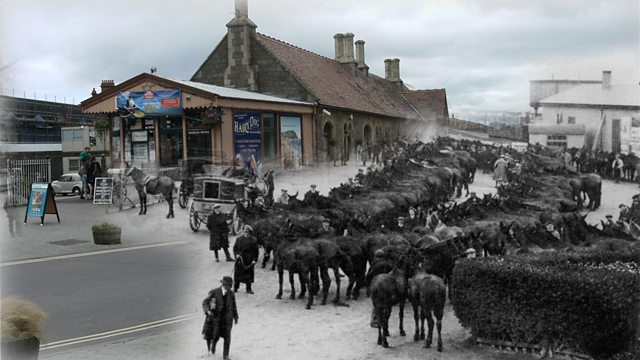Minehead, Somerset: Wagonloads of Mules
How a Somerset seaside town saw an unexpected wartime invasion
The phenomenal success of the 2011 film ‘War Horse’ brought the plight of livestock on the Western Front to the attention of millions of cinema-goers. To the vast majority of the British public it had remained a largely unknown aspect of World War One.
In the early weeks and months of the conflict it became obvious that men and weapons wouldn’t be enough to wage a ‘modern’ war in Northern Europe. The government knew that food, munitions and a whole array of supplies would have to be transported quickly and efficiently. Equines were the answer. Tough, resilient and used to carrying weight, draught animals were needed in enormous numbers. It meant a new role not just for the military’s own horses and ponies or those requisitioned from owners in the UK, but also animals imported from overseas. So mules from the Americas found their way to the seaside town of Minehead.
Why Minehead? Firstly, the coastal resort was within easy reach by rail of Avonmouth Docks. Secondly the surrounding Exmoor countryside could boast suitable fields and farms where the mules were able to feed and rest after their transatlantic journey before being moved to the front line.
From the railway station the animals would have been driven in packs along The Avenue in the heart of the town. This would have created quite a spectacle to the local onlookers, although railway staff and passengers were used to seeing equines transported by train. Horse wagons carrying polo ponies and hunters were a common sight on the branch line between Bishops Lydiard and Minehead in the years before the war. When the mules needed moving across the county it would have made sense to use the existing horse wagons, perhaps even converting them by taking out the internal wooden fittings to create a bigger, open space. After all, more room meant more mules.
In 1930 the plight of WW1 mules and other equines was recognised by Dorothy Brooke who set up a charity to run animal hospitals.
For some time there has been debate and argument about whether the mules were shod during their stay in the Somerset countryside or later once they had arrived in France and Belgium. Certainly the discovery of rusty mule shoes in the hamlet of Bratton, just outside Minehead, indicates that some, if not all the mules, visited the forge which operated there at the time.
A sculpture of two mules forms part of a monument in London’s Park Lane dedicated to animals that served and died alongside British and allied troops in war.
Location: Miinehead Railway Station, Minehead, Somerset TA24 5BG
Image shows Minehead Railway Station now and then, courtesy of Ms Daphne McCutcheon
Presented by Rita Tremain
Duration:
This clip is from
Featured in...
![]()
91�ȱ� Somerset—World War One At 91�ȱ�
Places in Somerset that tell a story of World War One
![]()
Animals—World War One At 91�ȱ�
Animals' contribution to the war effort
More clips from World War One At 91�ȱ�
-
![]()
The loss of HMY Iolaire
Duration: 18:52
-
![]()
Scotland, Slamannan and the Argylls
Duration: 07:55
-
![]()
Scotland Museum of Edinburgh mourning dress
Duration: 06:17
-
![]()
Scotland Montrose 'GI Brides'
Duration: 06:41







